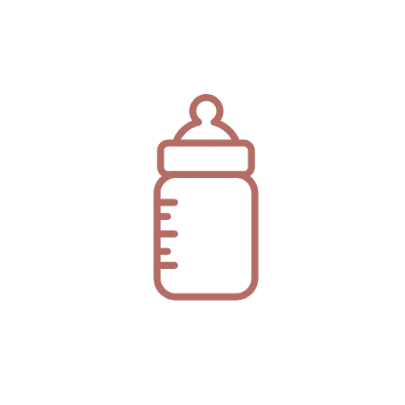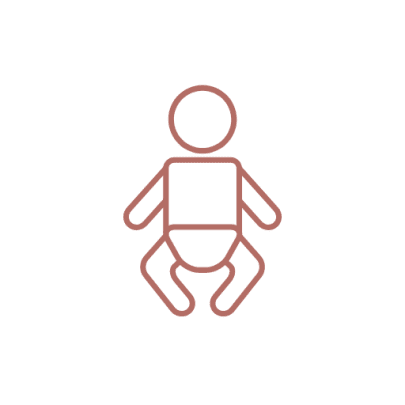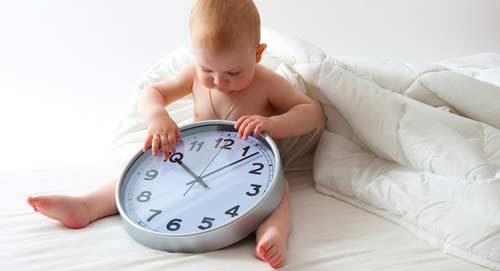
Anyone else surprised to hear daylight savings change is coming up!? I see the sun still shining and the days still reaching t-shirt temperature and I’ve convinced myself it’s still summer! But no, Autumn is definitely here and with it the clocks change. Our friend Laura at Peacey Sleep has prepared this info sheet on how to prepare your bub for the time change in the days before the clocks change.
✨ ✨ ✨ Sunday 2nd April 2023 our clocks go back one hour. ✨ ✨ ✨
For those of us without kids this typically means an extra hour of sleep. For the rest of us, that won’t be the case as our little ones are unlikely to get that memo. Are you wondering how to change your baby’s routine for the end of daylight savings?
If you follow any sort of routine or have time-based commitments in your week, you’ll likely need to make some sort of adjustment to your baby’s sleep times to help you keep on top of your to-do list when the clocks change.
I’m here to help you do this easily. Read on!
Our circadian rhythm, aka body clock, are set by 3 variables or 𝙯𝙚𝙞𝙩𝙜𝙚𝙗𝙚𝙧𝙨 (highschool biology anyone!?). These are LIGHT, FOOD, and SOCIAL INTERACTION. This basically means that when we expose our eyes to light, when we eat a meal, and when we interact with our families will all have an impact on when our bodies want to sleep.
So with the end of daylight savings coming up we can either slowly adjust these 3 things in the lead up to the clocks changing, or we can slowly do it afterwards.
If we avoid changing when we see light, eat, and interact with people our normal 7am wake up will turn into a 6am wake up after daylight savings changes back.
For our little kids, this might even look like a 5.30am wake up turning into a 4.30am wake up after the clocks change! And I’ve not come across any parent that is excited by that idea.
If this makes you panic… don’t fret! I like to look at this as an epic opportunity to resolve the early morning wake up for good!
So, let’s nut this out together! First you need to decide if you want to be proactive or reactive.
⏰Proactive: You can prepare your baby for daylight savings by changing their routine little by little over the week leading up to Sunday’s clock change… or
⏰ Reactive: You can wait till after the change in clocks and do the same changes reactively to get onto the new time.
Here’s an example of how to move onto the new time before the clocks change:
You can begin on the Monday before daylight savings ends. We call this day 1.
On day 1 shift your little one’s wake, eat, and nap times along by 15minutes. So a 7am wake up is shifted to 7.15am, a morning nap is shifted from 9.30am to 9.45am etc. Carry this on throughout the whole day. Placing bedtime 15 min later as well.
On day 2 you’ll copy what you aimed to do on day 1.
On day 3 shift again by 15 minutes. The 7.15am wake up can now be pushed to 7.30am and the 9.45am nap pushed to 10am etc. Day 4 will be the same.
On day 5 you’ll move the day along by another 15 minutes. Wake up is now 7.45am and nap is 10.15am etc.
If you started day 1 on the Monday, by day 7 the clocks have changed and you’ll do the final 15min shift, so the 7.45am wake gets pushed to what would have been 8am but now the clocks are put back 1hr and it’s now 7am again.
You did it! You shifted your baby’s whole routine to match the new time. Woohoo. Life carries on as per usual.
Morning wake up tip: If your baby is awake but happy in their cot in the morning I would leave them until your new wake up time to help make this shift in time the easiest.
Essentially you can do this whole process over a longer period if you wish and hang out at each new stage for a little longer. This is totally up to you. I don’t recommend going quicker than what I laid out above. Giving a couple of days at each new timing will help shift your baby’s circadian rhythm along the easiest.
Here is a quick guide to refer to when you’re in the middle of an Autumn time shift and you’re getting muddled.
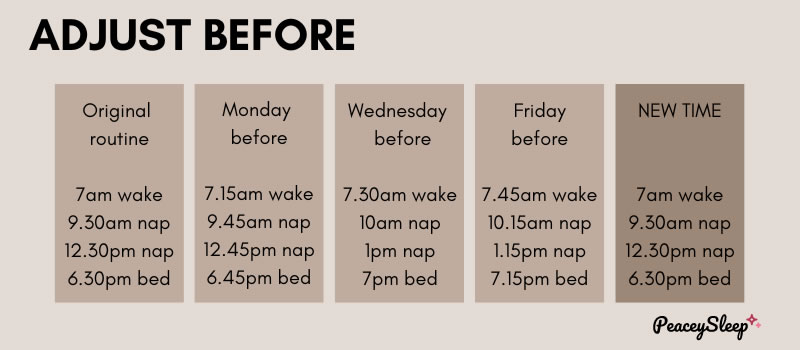
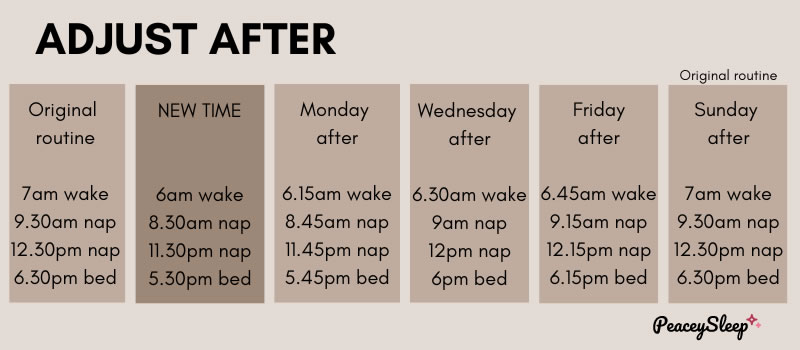
If you have a young child that wakes up earlier than you’d like, I’m sure you’re well aware that when the clocks turn back one hour, that early morning wake (EMW) will now be even earlier! Urgh!
Don’t panic! I want you to stop and reframe how you think of it and decide that now is the time to improve the EMW for good. All of a sudden, after the clocks change, you have a whole extra hour to work on resettling and that’s going to help cement the fact that 5am is still night time!
What that 5am wake needs is:
- a consistent approach from you,
- to avoid the 3 𝙯𝙚𝙞𝙩𝙜𝙚𝙗𝙚𝙧𝙨 (things that set biological clocks: food, light, and social interaction),
- and evaluating and adjusting your child’s day as a whole.
Doing these things is what’s going to shift your child’s start time to the day.
If this seems overwhelming, then I am here to help. We can work together one-on-one or within a group setting in my affordable membership: the Peacey Sleep Club
Get in touch by emailing me at [email protected] and we can work out a plan to say goodbye to those EMW’s for good!
Talk soon,
❤ Laura Peacey
Infant and Child Sleep Consultant @peacey_sleep


